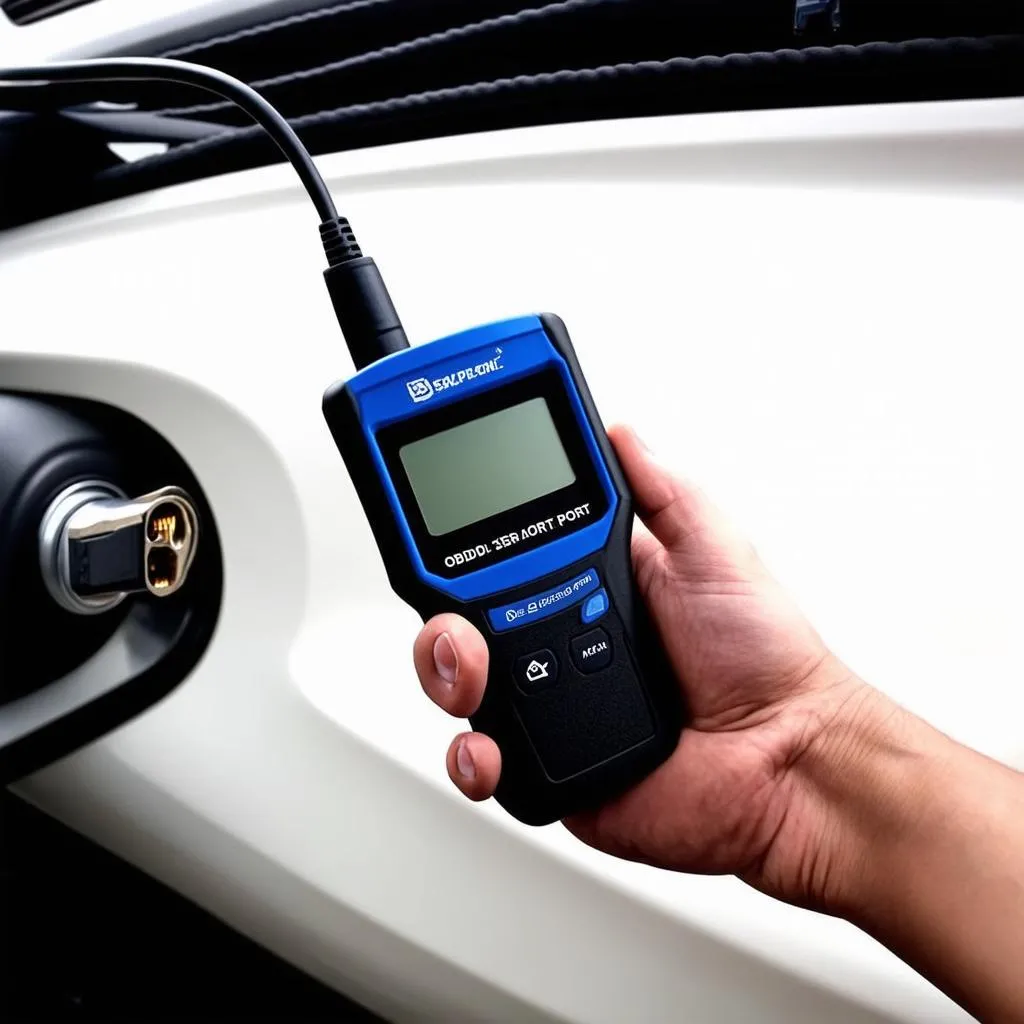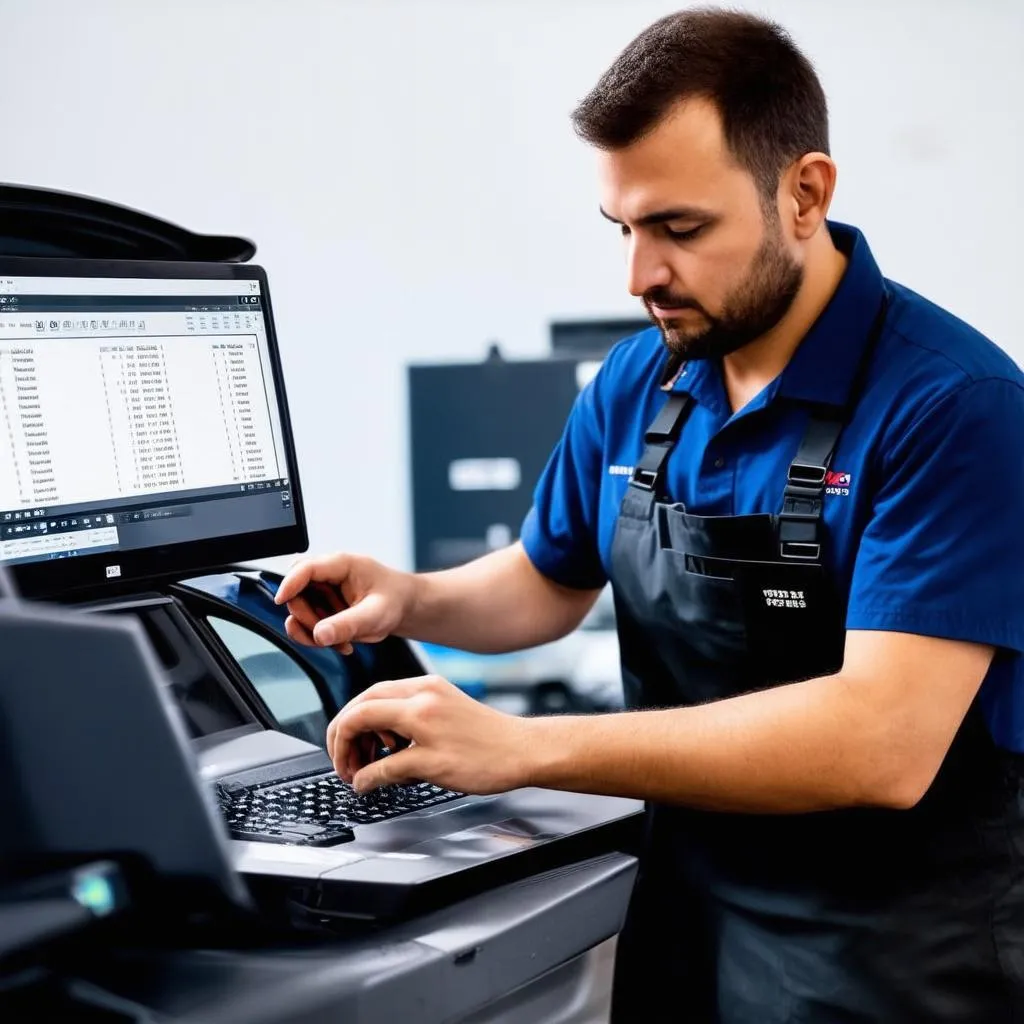Have you ever wondered what those flashing lights on your dashboard mean? Or why your car seems to be running a little rough? The answer might lie in the OBD system, your car’s “black box” that stores crucial information about its health. In this article, we’ll delve into the fascinating world of Obd Signification, unraveling the mysteries hidden within your car’s digital language.
Understanding Obd Signification
The OBD (On-Board Diagnostics) system is a computer-based system in your car that constantly monitors its performance. It checks everything from engine functions to emissions, ensuring your car operates safely and efficiently. The OBD system uses a standardized language, known as the OBD protocol, to communicate with diagnostic tools.
What is Obd Signification?
OBD signification refers to the meaning of the diagnostic codes generated by the OBD system. These codes, usually a combination of letters and numbers, provide valuable insights into your car’s health and potential issues.
Why Does Obd Signification Matter?
Understanding OBD signification is crucial for several reasons:
- Early Detection of Problems: By deciphering OBD codes, you can identify potential issues before they escalate into major problems, saving you money and headaches in the long run.
- Preventative Maintenance: OBD codes can help you schedule preventative maintenance tasks, like replacing a faulty sensor, ensuring your car runs smoothly for years to come.
- Accurate Diagnostics: When you take your car to a mechanic, understanding OBD signification helps you communicate effectively and ensure the mechanic correctly identifies and addresses any issues.
Decoding the Language of Your Car
Think of OBD codes as your car’s “language.” Each code represents a specific condition or malfunction. To understand what your car is “saying,” you need to learn its language.
Common OBD Codes and Their Meanings
Here are some common OBD codes and their meanings:
- P0171: System Too Lean (Bank 1) – This code indicates that the air-fuel mixture in your engine is too lean, which can lead to engine performance issues.
- P0300: Random/Multiple Cylinder Misfire Detected – This code suggests a misfire in one or more cylinders, potentially caused by a faulty spark plug, fuel injector, or other engine components.
- P0420: Catalyst System Efficiency Below Threshold (Bank 1) – This code points to a problem with the catalytic converter, which is responsible for reducing harmful emissions.
Finding Your Car’s OBD Codes
Using a Diagnostic Scanner
The most common way to access OBD codes is using a diagnostic scanner. These tools plug into your car’s OBD-II port, typically located under the dashboard, and display the codes stored in your car’s computer.
Mobile Apps
Some mobile apps can also act as diagnostic scanners. However, ensure that the app you choose is reputable and compatible with your vehicle.
The Importance of a Professional Diagnosis
While you can use a diagnostic scanner to access OBD codes, it’s crucial to remember that they don’t always tell the whole story. A qualified mechanic can interpret the codes and provide an accurate diagnosis of your car’s issue.
Obd Signification: Beyond the Technical
OBD signification is more than just a technical jargon. It’s a crucial piece of the puzzle in understanding and maintaining your car’s well-being. By understanding the language of your car, you can ensure it runs smoothly and safely for years to come.
 OBD scanner
OBD scanner
Frequently Asked Questions
Q: What is the difference between OBD-I and OBD-II?
A: OBD-I is the older standard used in vehicles before 1996. OBD-II is the newer standard that has been used in most vehicles since 1996. OBD-II is more comprehensive and user-friendly, making it easier to access and interpret diagnostic codes.
Q: Can I clear OBD codes myself?
A: Yes, you can clear OBD codes using a diagnostic scanner. However, clearing the codes doesn’t solve the underlying problem. If the code reappears, it’s essential to address the issue to avoid further damage to your car.
Q: How often should I check my car’s OBD codes?
A: It’s a good practice to check your OBD codes at least once a year or when you notice any changes in your car’s performance.
Additional Resources
For more information about OBD signification and car diagnostics, you can explore the following resources:
- TechCarUSA.com: Our website offers a wealth of resources and articles on various car-related topics, including OBD diagnostics.
- Automotive Repair Manuals: Consult the specific repair manual for your vehicle model for detailed information about OBD codes and diagnostic procedures.
- Online Forums: Join online forums for car enthusiasts to connect with others and share knowledge about OBD codes and car repair.
Looking for Professional Support?
If you need help interpreting OBD codes or require assistance with car diagnostics, we’re here to help. Contact us at Whatsapp: +84767531508 and our team of automotive experts will be happy to assist you 24/7.
 Car diagnostics
Car diagnostics
Conclusion
Understanding OBD signification is essential for responsible car ownership. By learning the language of your car, you can ensure its optimal performance, prevent costly repairs, and keep your car running smoothly for years to come.
We encourage you to explore the resources mentioned in this article and share your experiences with OBD diagnostics in the comments below. Happy driving!